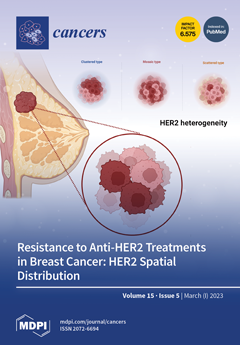Introduction: This study compares the risk of GC according to age at
H. pylori eradication, stratified based on the presence of family history of GC using a population-based large cohort. Method: We analyzed individuals who underwent GC screening between 2013 and 2014 and received
H. pylori eradication therapy before screening. Results: Among 1,888,815
H. pylori-treated patients, 2610/294,706 and 9332/1,594,109 patients with and without a family history of GC, respectively, developed GC. After adjusting for confounders, including age at screening, the adjusted hazard ratios (95% confidence intervals) for GC comparison, 70–74, 65–69, 60–64, 55–59, 50–54, 45–49, and <45 years with ≥75 years at
H. pylori eradication were 0.98 (0.79–1.21), 0.88 (0.74–1.05), 0.76 (0.59–0.99), 0.62 (0.44–0.88), 0.57 (0.36–0.90), 0.38 (0.22–0.66), and 0.34 (0.17–0.67), respectively, among patients with a family history of GC (
p < 0.001) and 1.01 (0.91–1.13), 0.95 (0.86–1.04), 0.86 (0.75–0.98), 0.67 (0.56–0.81), 0.56 (0.44–0.71), 0.51 (0.38–0.68), and 0.33 (0.23–0.47), respectively, among patients without a family history of GC (
p < 0.001). Conclusion: In patients with and without a family history of GC, young age at
H. pylori eradication was significantly associated with a reduced risk of GC, suggesting that the early treatment of
H. pylori infection can maximize GC prevention.
Full article






